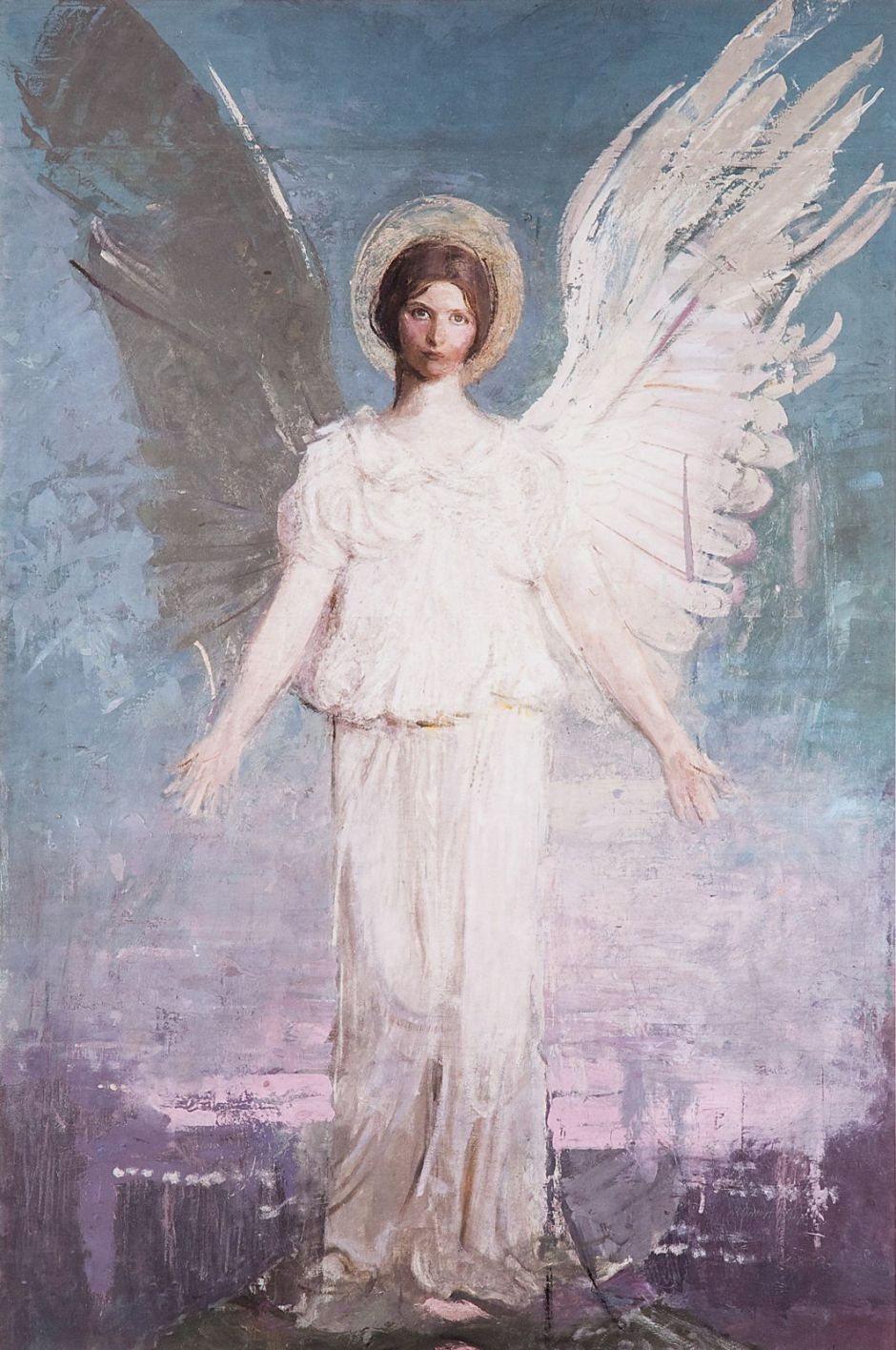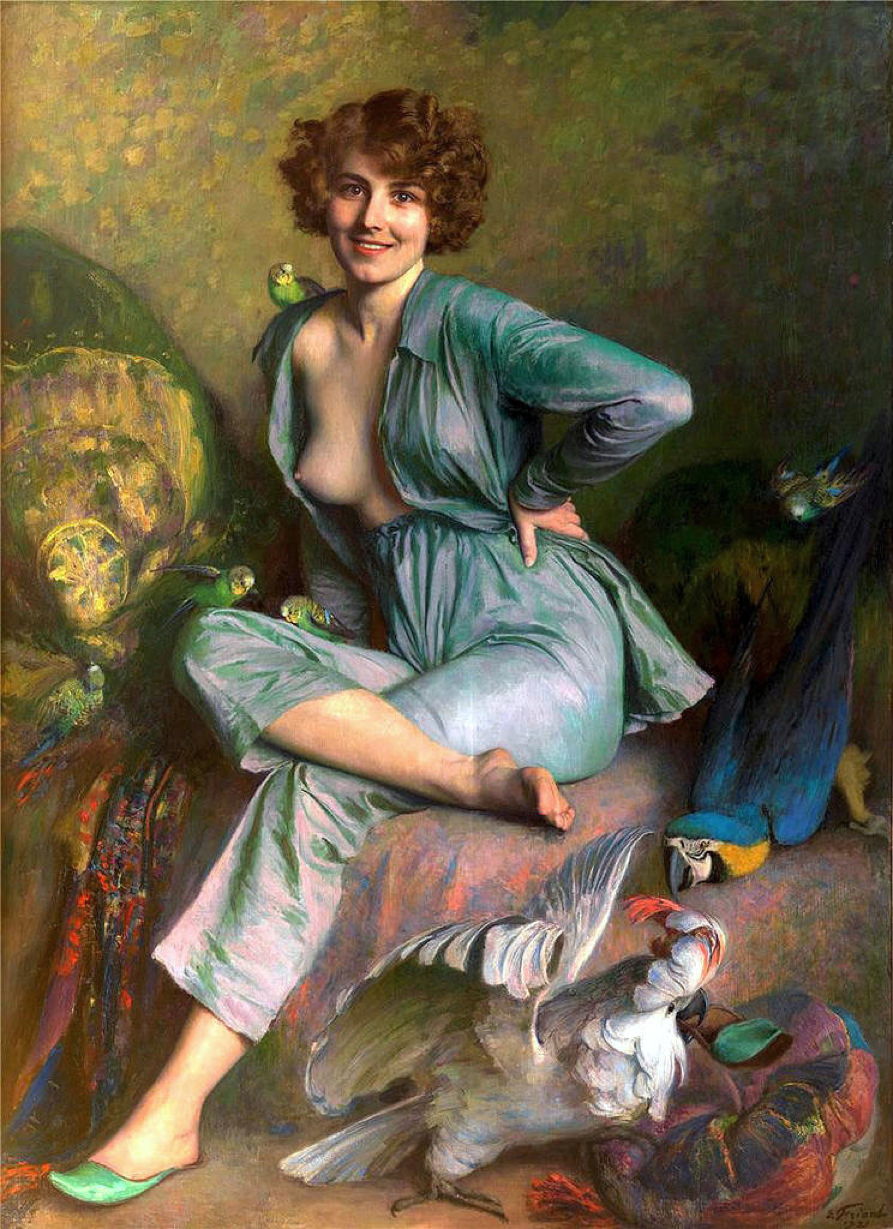Each year I take a look back at some of the many fine and fascinating paintings from a century ago. They serve as a reminder of how rich and varied art has been, and how distorted a view we can get from modern accounts of art history.
The year 1921 wasn’t as peaceful as might seem. The country Georgia was invaded by the Red Army, the Conference of London struggled to resolve problems which had arisen from the collapse of the Ottoman Empire, the Irish War of Independence finally concluded, there were major strikes in Britain and Norway, and Fascism was on the rise in Germany and Italy. On the bright side, the world’s first fast food chain, White Castle, opened for business in Wichita, Kansas, and the first known public performance was made of the illusion of ‘sawing a woman in half’.
Paintings of 1921 were by no means all Modernist or Surrealist.

John Collier had been a pupil of the Pre-Raphaelites, and continued to paint well into the twentieth century. His Sleeping Beauty shows an easily recognised scene from this popular story, told in traditional terms.

The Norwegian Naturalist Christian Krohg tells a more contemporary story in his Seamstress’s Christmas Eve. A young woman is in her garret bed-sit, where she has been toiling long hours at her sewing machine. An affluent couple – a relative or employer perhaps – has just arrived to give the young woman a Christmas tree, a large wicker basket of presents, and more. Maybe that young woman can still be saved from the fate brought on by her sweated labour at the sewing machine, and her inevitable decline towards prostitution.

The American artist William McGregor Paxton uses what he termed ‘binocular vision’ in The Figurine. This optical technique derived from Vermeer puts the painted figurine into sharp focus, but makes the woman’s face softer. It’s also intriguing that, late in his career, Paxton turned to paintings of sculpted figures, in just the way that his former teacher Gérôme had done a quarter of a century earlier.

In the final months of Abbott Handerson Thayer’s life, despite rapidly declining health and a series of strokes, he painted Noon, then died in the countryside in which he had been brought up, on 29 May.

Colin Campbell Cooper, better known for his earlier cityscapes of New York, had turned more to figurative art. His Fortune Teller is a brilliant study in colour, light, and East Asian influence, although it’s something of a mystery that the woman at the left, whose fortune is being told, is holding a ukulele in her right hand.

Émile Friant’s late paintings include a wide range of themes. The Birds is a brilliantly colourful and detailed erotic fantasy which demonstrates his great technical skills, but has drifted far away from his earlier Naturalism and social concerns.

Sir William Nicholson painted few figurative works, and even fewer nudes. This example was never exhibited in his lifetime.

Towards the end of his life, a former pupil of Léon Bonnat at the École des Beaux-Arts in Paris, Henri Adrien Tanoux, made the last painting I have seen of the famous femme fatale Salammbô. Tanoux was no Symbolist, but a realist who, like Rochegrosse, was famous for his beautiful nudes. She’s another seductive Salome, a large red rose held to her breast, with one possible link to Flaubert’s inspirational story: the diaphanous veil which is wound from her left arm to her legs, with its unusual eye-like motifs in gold.

The former Nabi Félix Vallotton continued making figurative paintings after the war. His Blonde Nude has a surprisingly modern look.

Anita Rée, better-known for her landscapes, made some wonderful portraits of local people, including this Tyrolean Woman. She’s surrounded by signs of her faith, and is working her way through her rosary as she poses.

In 1910, the former Nabi Maurice Denis started renting a large building in Saint-Germain-en-Laye, which had originally been a general hospital when it was built in the eighteenth century. Just on the outbreak of the First World War in 1914, Denis bought the building, which he decorated and called The Priory, and now houses the largest collection of his works. The best-known image of Denis is his Self-Portrait in Front of the Priory, when he had just entered his fifties, and is stood in front of the large mansion.

